I'm working in Python2.7 with 3D numpy arrays, and trying to retrieve only pixels who fall on a 2D tilted disc.
Here is my code to plot the border of the disc (= a circle) I am interested in
import numpy as np
import matplotlib.pyplot as plt
from mpl_toolkits.mplot3d import Axes3D
#creating a 3d numpy array (empty in this example, but will represent a binary 3D image in my application)
space=np.zeros((40,40,20))
r = 8 #radius of the circle
theta = np.pi / 4 # "tilt" of the circle
phirange = np.linspace(0, 2 * np.pi) #to make a full circle
#center of the circle
center=[20,20,10]
#computing the values of the circle in spherical coordinates and converting them
#back to cartesian
for phi in phirange:
x = r * np.cos(theta) * np.cos(phi) + center[0]
y= r*np.sin(phi) + center[1]
z= r*np.sin(theta)* np.cos(phi) + center[2]
space[int(round(x)),int(round(y)),int(round(z))]=1
x,y,z = space.nonzero()
#plotting
fig = plt.figure()
ax = fig.add_subplot(111, projection='3d')
ax.scatter(x, y, z, zdir='z', c= 'red')
plt.show()
The plot gives the following figure :
which is a good start, but now I want a way to retrieve only the values of the pixels of space which are located in the disc defined by the circle : the ones in the pink zone in the following image (in my application, space will be a 3D binary image, here it is numpy.zeros() just to be able to plot and show you the disc I want):
How should I procede ? I guess there is some numpy masking involved, an I understand how you would do it in 2D (like this question) but I'm having trouble applying this to 3D.

